As a teenager, waiting for my first MacBook to arrive in the mail, I often checked Apple’s website to daydream. I remember that, on the product overview page, the company touted the various tasks Mac OS X could accomplish. Office productivity, design, video editing, music production, and so on. About gaming, however, Apple’s stance was “there are some titles, but use Boot Camp to play on Windows”.
These days are gone. With Apple Silicon, Macs are gaming powerhouses, and the best hardware manufacturers make macOS-compatible peripherals to improve your experience. Check our curated list below for some great offerings.
Why Good Gaming Peripherals for Mac Are Hard To Find?
Even though Macs have been more than capable gaming machines for a while, good peripherals are still hard to find. Part of the blame is on Apple: MacBook Pros, for instance, have featured only USB-C ports since 2016. To this day, most peripherals use USB-A connections, though most of them come with adapters in the box.
However, the manufacturers also are responsible for this shortage. Adding macOS-compatible keycaps in a gaming keyboard box, to give just one example, would cost cents. Companies like Logitech and Corsair have done even better, printing both Windows and macOS functions in a single keycap.
Porting customization apps to control features like macros and RGB lighting doesn’t require a significant investment either. While some are direct Apple competitors (Razer, Asus, and MSI, e.g., make computers), many don’t have this excuse.
In the end, it comes down to not seeing macOS as a relevant platform for gaming. Linux users suffered from this for quite some time, too, but thankfully, both situations have been changing recently. Gaming was part of macOS Sequoia’s announcement feature showcase (albeit a minor one) in June. The App Store allows (if the developer chooses to) users to install high-end iPad games on Apple Silicon Macs.
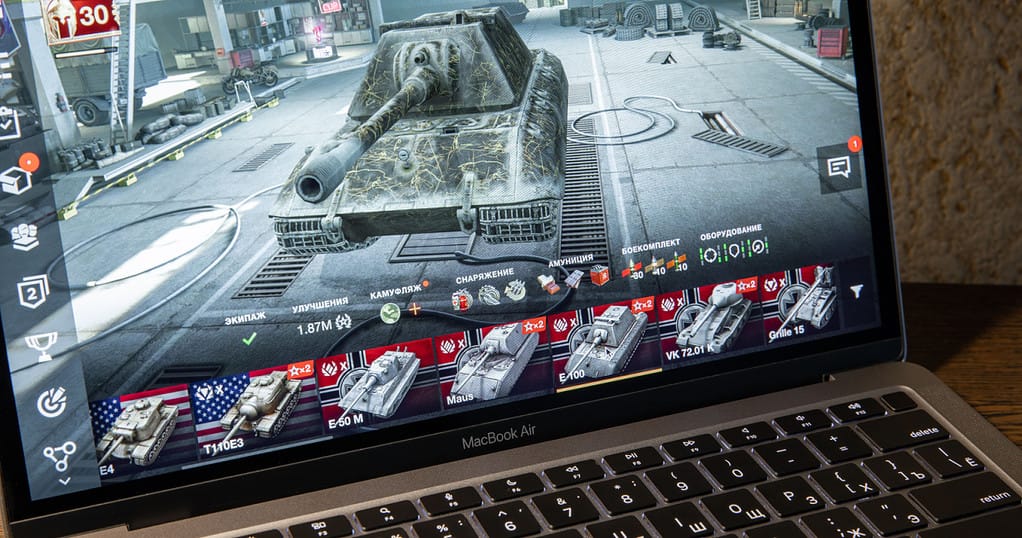
Earlier this week, Corsair announced exclusive versions of its K65 Plus keyboard and M75 mouse for Macs. The company also provides a customization app for macOS, one of few (alongside Logitech, Keychron and SteelSeries) to do so.
Gaming Keyboards for Mac
The above leads us to our first items. Keyboards are one of the most important gaming peripherals, and finding the best one for a Mac can be challenging. That’s because you need not only to look for the usual specifications, like switch type, keycap profile, and macro support. You also need to consider if the key layout is macOS-compatible and if there is a customization app available.
1. Corsair K65 Plus
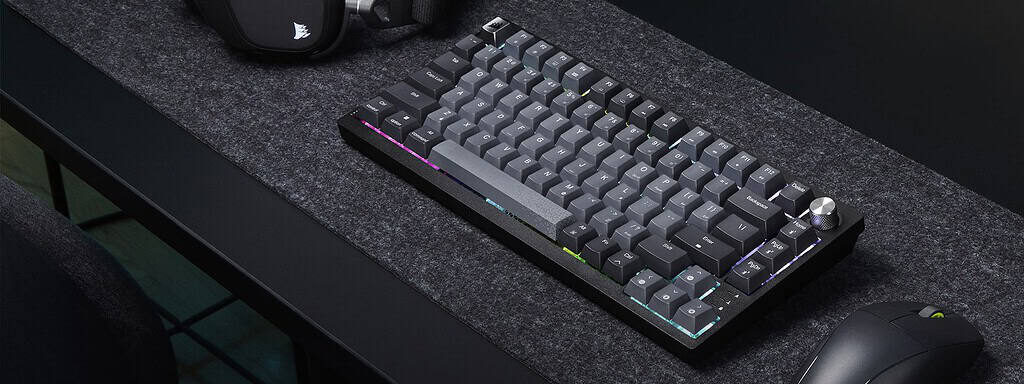
We kick off the list by giving kudos to Corsair. The K65 Plus is an all-around excellent gaming keyboard, having a semi-custom 75% layout and a knob.
The End key requires an Fn modifier, though, with the operating LEDs taking their physical place. It uses Corsair’s hot-swappable MLX Red linear switches and connects via Bluetooth, USB, or 2.4GHz dongle (USB-A). It costs a bit over $150 at Amazon.
2. Keychron K8 and Keychron K2

Keychron’s offerings come with red, brown, or blue Gateron G Pro switches. While the K8 has a TKL layout, the K2 has a more compact 75% size. Both feature a fully macOS-compatible design and include a couple of custom keys.
The major downside of Keychron’s keyboards is that they don’t offer a 2.4GHz dongle, with the wireless connection restricted to Bluetooth. The backlight is limited to white. Both models retail for about $80 at Amazon.
Gaming Mice for Mac
Also, one of the main gaming peripherals, finding the best mouse for your Mac is slightly easier. Since the most common buttons are quite standard, all you need is companion software to customize the settings. Specifications like weight, grip type, sensors, switches, and onboard memory are as important as those for non-Mac-compatible mice.
1. Logitech G703 LIGHTSPEED

The Logitech G703 LIGHTSPEED is an all-time fan-favorite, not only for Mac users. It combines a clean design with powerful internals: a Hero 25K sensor and Omron switches rated for 50 million clicks.
The G703 weighs 95 grams, with a removable 10-gram weight for those who like their mice heavier. There’s no Bluetooth connectivity, but the LIGHTSPEED dongle offers near-wired input lag. It can also be used with the included USB cable, which can work as an extender for the receiver as well.
Lastly, the G703 supports Logitech’s POWERPLAY wireless charging technology when coupled with a compatible mousepad. This is a great addition, considering that, like most gaming mice, the model has a poor 35-hour battery life. You can get a Logitech G703 LIGHTSPEED for $60 at Amazon.
2. SteelSeries Aerox 9

Those who play MMORPGs, MOBAs, and other games which rely heavily on macros, may prefer the Aerox 9, by SteelSeries. With a 12-key side panel, there’s little you can’t add to it in terms of custom workflows. The sensor is a TrueMove Air, with up to 18,000DPI, paired to custom Golden Micro switches.
The holed outer shell means the Aerox 9 only weighs 89 grams, while an inner protection layer ensures it’s waterproof. Battery life is great, lasting up to 180 hours. The Aerox 9 connects either via cable, Bluetooth, or with a 2.4GHz dongle. The high-end specs come at a price, though: at Amazon, the model costs over $140.
3. Keychron M6

The last mouse in our list is the Keychron M6, which comes with a 26,000DPI PixArt 3395 sensor. The switches are 80M Micro, by Huano.
The M6 tips the scales even lower than the Aerox 9, weighing only 78 grams. Its body offers a thumb rest on the left side, where there is also a secondary, horizontal scroll wheel.
Connectivity is a strong point here: you can choose between the cable, Bluetooth, or two types of 2.4GHz dongles. One offers 1,000Hz polling rate, while the other goes up to 4,000Hz — for a premium. There are some differences between the models.
The 1,000Hz version offers up to 80 hours of battery life and comes in a pretty crowded box. It includes two dongles (one USB-A, one USB-C), and a USB-C to USB-C cable. There are also two USB-C to USB-A adapters: one with a USB-A port, other with a USB-A plug.
The 4,000Hz version goes up to 120 hours on a single charge, but comes with less accessories. The box includes the USB-C to USB-C cable, the dongle, and a USB-C to USB-A adapter. It costs $75 at Amazon, compared to $55 of the 1,000Hz model.
Gaming Controller for Mac
I have never been fond of joysticks, but some people prefer them for computer gaming as well as for consoles. Luckily, there’s no shortage of macOS-compatible controllers, including the stock PS5 and Xbox ones from Sony and Microsoft.
SteelSeries Nimbus+

I will, however, recommend the SteelSeries Nimbus+, which is the one Apple itself sells. It offers X/Y/A/B buttons, a D-pad, and two clickable analog joysticks on the front. The back features dual R/L buttons with Hall Effect magnetic sensors.
An iPhone-compatible mount is included in the box, matching well with the built-in navigation keys. Connectivity is limited to Bluetooth.
Curiously, charging the 50-hour battery is done through a Lightning port. Can’t get much more Apple-compatible than that, right? The Nimbus+ retails for $70 at Amazon.
Gaming Headsets for Mac
No gaming setup is complete without a good headset. Check below for some of the best Mac-compatible headsets to add to your gaming peripherals wishlist.
1. Logitech G535
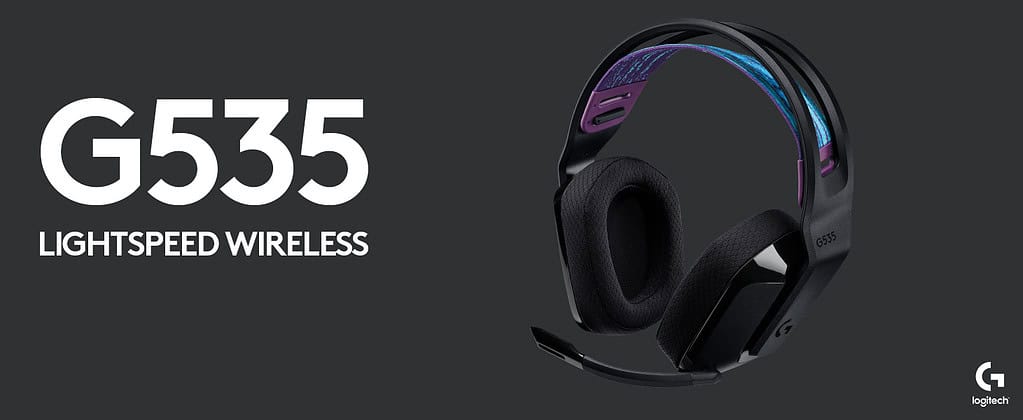
I didn’t think much of the G535 at first, when Logitech sent me a review sample a couple of years ago. In time, the 33-hour battery life, good sound quality, comfortable fit, and clever elastic headband grew on me. I still lament parting ways with it.
Other features include a flip-to-mute microphone, on-ear controls, and customization with the G Hub software. The reliable LIGHTSPEED connection is indistinguishable from using a cable, but there’s no Bluetooth. The Logitech G535 can be purchased for $80 at Amazon.
2. SteelSeries Arctis Nova 5X
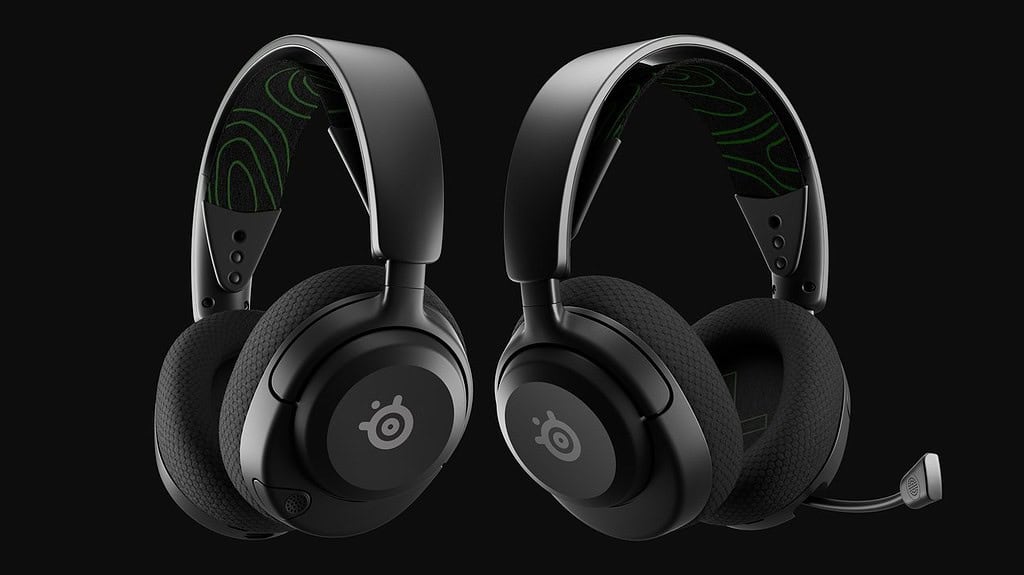
Another option is the SteelSeries Arctis Nova 5X. Battery life is higher, with 60 hours, and there’s Bluetooth on board. The microphone can be stored inside the earcup, so you can even use the Nova 5X as a regular headphone. The headset costs $110 at Amazon.
Gaming Monitors for Mac
Lastly, you can’t put your Mac’s graphical prowess to work if your screen isn’t up to the task, right? Apple’s displays, while great for creative work and watching movies or TV shows, aren’t designed with gaming in mind.
A partial exception is some MacBook Pros (M1 Pro, M1 Max, M2 Pro, M2 Max, and all models since 2023). They feature 120 Hz screens, which are suitable for gaming but not flagship-grade. Other Apple screens, including iMacs’, the Studio Display, and even the $6,000 Pro Display XDR, only go up to 60Hz.
Don’t get me wrong, these products have amazing panels regarding color accuracy, contrast, viewing angles, and so on. The point is that these aren’t the qualities (or the only qualities) you have to look for in a gaming monitor. Things like refresh rate, response time, and motion blur prevention, to mention a few, are more important.
1. Asus TUF Gaming VG27AQL3A
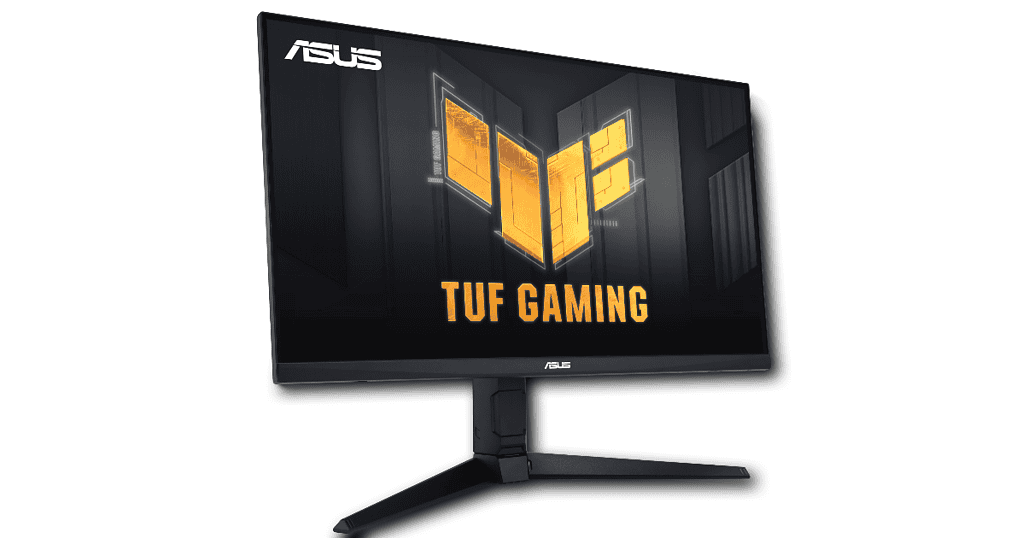
For those with a limited budget, the TUF Gaming VG27AQL3A from Asus is a good option. It has a pretty decent panel, covering 130% of the sRGB color space, with a solid 180Hz refresh rate. The 1440p resolution isn’t amazing, but it’s still better than the Full HD most entry-level gaming monitors offer.
If you plan to share it with other computers, the VG27AQL3A features three inputs: two HDMI 2.0 ports and one DisplayPort. AMD FreeSync and NVidia G-Sync compatibility is also part of the package for non-Mac gaming. Lastly, it has a DisplayHDR 400 certification, and comes with 3 years of warranty. The Asus TUF Gaming VG27AQL3A costs $300 at Amazon.
2. Samsung Odyssey Neo G8
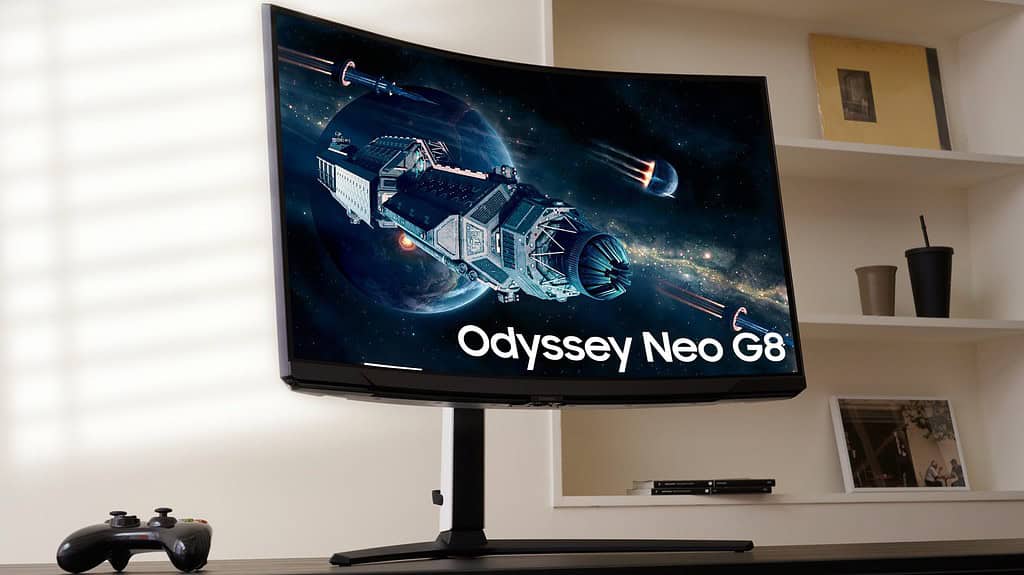
Having reviewed a couple of Samsung gaming monitors, I could say I have a love and hate relationship with them. While the displays themselves are amazing, they sometimes have almost silly flaws. These can range from poor port selection to software issues. The Odyssey Neo G8, however, has good connectivity and the manufacturer didn’t shove its Tizen OS into the monitor.
Bear in mind that this is a high-end offering. Not all Macs, even recent ones, have the hardware to fully support the Odyssey Neo G8’s feature set. You’ll need a computer with an M2 Pro/Max/Ultra, M3 Pro/Max, or any M4 chip for 4K@240Hz. Yes, the Odyssey Neo G8’s 32-inch UHD screen refreshes over 200 times per second.
Other specs include a 1000R quantum dot curved panel, 2,000nit peak brightness, 1,000,000:1 contrast ratio, and 1ms response time. The height-adjustable base allows not only for tilt and swivel, but for full 90-degree pivot as well. The Odyssey Neo G8 features two HDMI 2.1 and one DisplayPort 1.4 video connections. It has a 3.5mm jack for headphones, and a two-port USB-A hub.
As expected from the best gaming peripherals, Mac or otherwise, the Odyssey Neo G8 includes RGB illumination. There are just a couple of tiny strips on the front, but the back features Samsung’s traditional ring-shaped lighting. It supports CoreSync, which dynamically updates the colors to match what’s being displayed on-screen.
All that opulence, obviously, doesn’t come cheap. Having an Odyssey Neo G8 on your desk requires you to shell out $1,000 at Amazon.
Gaming Dock for Mac
Oh, there’s one more thing. As I said in some paragraphs above, Macs aren’t exactly known for using widely available connectors. Even if you get some USB-C accessories, it’s unlikely you can assemble a full gaming setup without a dock.
Razer USB4 Dock

Razer’s recently-announced USB4 dock has your back for that. Even though it foregoes the Thunderbolt naming, you won’t have any trouble connecting this monstrous hub to your Mac. It features a whopping 14 ports: five USB-A, two USB-C, one 3.5mm jack, one Ethernet, HDMI and DisplayPort. Two SD card readers, one MicroSD and one full-size, complete the package.
For MacBook users, the included 180W adapter charges up to 100W via USB-C while also powering connected peripherals. As for those, you get up to 1000Mbps in the Ethernet port, HDMI 2.1, and DisplayPort 1.4. Used alone, the video outputs allow for 4K@120Hz and 4K@240Hz, respectively. With both connected, refresh rates drop to 60Hz and 120Hz.
The 3.5mm jack supports 7.1 surround sound, while the USB-A ports are two 3.2 Gen1 and two 3.2 Gen2. There’s one additional USB 2.0 port for 2.4GHz dongles. The USB-C ports cap at USB 3.2 (10Gbps) for peripherals — USB4 is limited to the computer-to-dock connection. Finally, both card readers support UHS-II speeds.
There’s a single thing missing in the dock: RGB lighting. Not that it would matter for Mac users, anyway: Razer dropped macOS support in Mojave six years ago. Being a plug-and-play device, in this case, just prevents headaches. My Kraken Ultimate headset, for instance, can only be configured using OpenRGB and is barely supported.

Mac gamers have always had a hard time. For starters, our computers have been considered underpowered in comparison to similarly-priced competitors (something often, but not always, true). Then, there was (is?) the lack of mainstream titles available. Lastly, Macs are always left out of the compatibility list for the best gaming peripherals.
Luckily, the first two issues have changed in recent times. Now, it’s up to you gear up and help with the last one.
